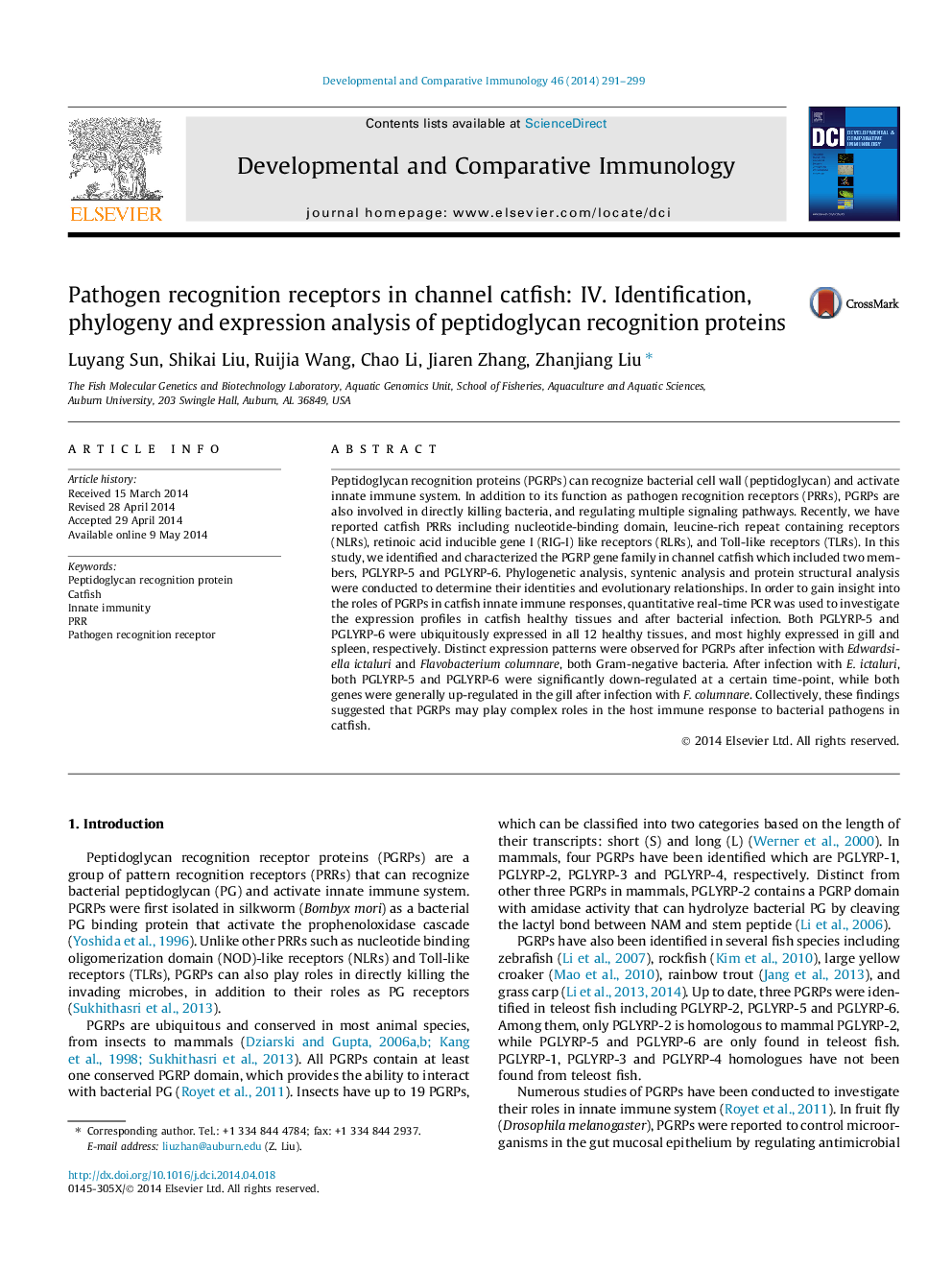| Article ID | Journal | Published Year | Pages | File Type |
|---|---|---|---|---|
| 2429143 | Developmental & Comparative Immunology | 2014 | 9 Pages |
•Peptidoglycan receptors (recognition protein) were identified in channel catfish.•PGLYRP-2 appeared to have been lost in the channel catfish genome.•PGLYRP-5 and PGLYRP-6 are most highly expressed in gill and spleen, respectively.•Distinct expression patterns were observed for PGRPs after bacterial infections.
Peptidoglycan recognition proteins (PGRPs) can recognize bacterial cell wall (peptidoglycan) and activate innate immune system. In addition to its function as pathogen recognition receptors (PRRs), PGRPs are also involved in directly killing bacteria, and regulating multiple signaling pathways. Recently, we have reported catfish PRRs including nucleotide-binding domain, leucine-rich repeat containing receptors (NLRs), retinoic acid inducible gene I (RIG-I) like receptors (RLRs), and Toll-like receptors (TLRs). In this study, we identified and characterized the PGRP gene family in channel catfish which included two members, PGLYRP-5 and PGLYRP-6. Phylogenetic analysis, syntenic analysis and protein structural analysis were conducted to determine their identities and evolutionary relationships. In order to gain insight into the roles of PGRPs in catfish innate immune responses, quantitative real-time PCR was used to investigate the expression profiles in catfish healthy tissues and after bacterial infection. Both PGLYRP-5 and PGLYRP-6 were ubiquitously expressed in all 12 healthy tissues, and most highly expressed in gill and spleen, respectively. Distinct expression patterns were observed for PGRPs after infection with Edwardsiella ictaluri and Flavobacterium columnare, both Gram-negative bacteria. After infection with E. ictaluri, both PGLYRP-5 and PGLYRP-6 were significantly down-regulated at a certain time-point, while both genes were generally up-regulated in the gill after infection with F. columnare. Collectively, these findings suggested that PGRPs may play complex roles in the host immune response to bacterial pathogens in catfish.
